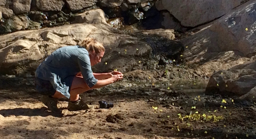Longhorn Beetles (Cerambycidae) on Sep 2, 2017
Originally reported as Asian Longhorned Beetle (Anoplophora glabripennis)
Submitter does not have a specimen
Description of specimen
I removed a very sticky tall Pine tree from the front yard and put the wood in the backyard to be spit up for firewood and yesterday while controlling a bee hive, I noticed my wood pile was making chewing noises and some pieces had shaving/sawdust piling up so I split that round up and found a larvae inside that looks to be a Asian Longhorned Beetle but not sure.



Christine Buhl
Sept. 6, 2017, 8:06 a.m.
Christine Buhl
Sept. 6, 2017, 8:15 a.m.